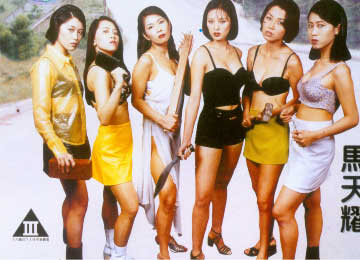
“We’re victims. Can’t you see it? Is it wrong for us to fight . . . ?” (Nadeki Fujimi, “Pink Panther” aka “Pink Killer”)
Reading Strategies

Reading Strategies
Traditional conceptualizations of the action genre – particularly of muscle dramas – construe them as appealing mainly to male spectators and as affirming patriarchal ideology via identification of the spectator of either sex with conspicuously gender-stereotyped conventions of “look” (Note 1), narrative structure (Note 2) and character (Note 3). Debates have continued in Western feminist film studies concerning whether recent female action films as a sub-genre are “progressive” (privileging female power) or “recuperative” (ultimately re-affirming patriarchal assumptions). Other approaches have focused less on “essentialist” (Note 4) readings of film role or narrative, with greater emphasis on active audience participation in the construction of diverse meanings. This cultural studies (Note 5) perspective on negotiated readings of film texts provides a framework for analyzing the experience of viewing the genre films of one culture by audiences of another, without being weighted too heavily in favor of cultural or theoretical specificity. Examination of the combinations of cultural/intercultural entertainment product, genre, gender and audience, within a context of Western spectatorship, raises a number of provocative questions about symbolism, power, and visual pleasure associated with a cinema in which, to paraphrase a fan writer, at one time “fighting divas seemed to grow on trees.” What readings are negotiated? Which meanings are possible?

1. Laura Mulvey, “Visual pleasure and narrative
cinema.” In, Thornham, op. cit., pp. 58 – 69.
2. Fiske, op. cit., pp. 293 – 296.
3. Fiske, ibid.
4. e. ann Kaplan, op. cit.
5. Fiske, ibid.
6. White, op. cit., pp. 191 – 192.
7. White, ibid.
8. Fiske, ibid.